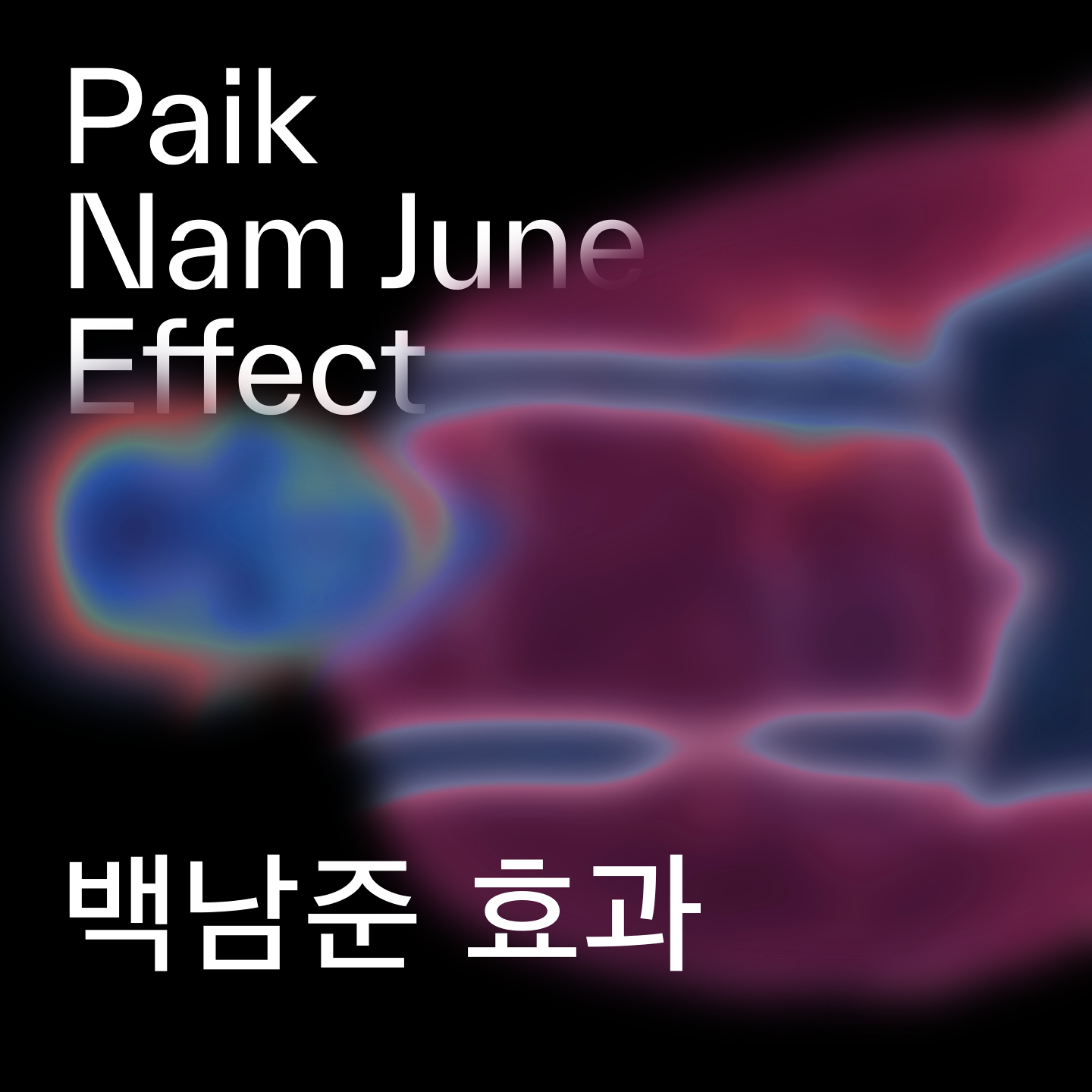Paik Nam June Effect
November 10, 2022–February 26, 2023
313 Gwangmyeong-ro, Gwacheon-si
Gyeonggi-do
13829
Korea
MMCA’s special exhibition for 2022—Paik Nam June Effect—examines the situation of Korean art in the 1990s in a new light, based on themes previously addressed by historical exhibitions organized by Nam June Paik and the MMCA, such as Nam June Paik, Video Time, Video Space (2022), and the Whitney Biennale Seoul (1993).
Following his return to Korea in 1984, after more than 30 years overseas, Paik made strategic moves, as a planner and translator of cultures, to connect Korea with the world during the 1980s and 90s. In particular, he took advantage of the specific circumstances of the 1986 Asian Games, the 1988 Seoul Olympics, and the 1993 Daejeon Expo to engage in a broad scope of activities based on his connections across political and business circles. Producing remarkable outcomes from his organizing of numerous exhibitions, events and advertisements while mobilizing his international network to help establish the Gwangju Biennale in 1995 and the Korean Pavilion at the Venice Biennale, Paik rose as a national star, transcending the boundaries of art. His unprecedented global method of activity, introduction of new media, and efforts to discover and promote the charm of Korean identity throughout the world, while emphasizing global Korea, had great influence not only on the Korean art scene of the 1990s—a time when post-modernism and post-colonialism were on the rise amidst globalization and development of modern science and technology—but also on contemporary art today.
Nam June Paik, Video Time, Video Space (1992), and the Whitney Biennale Seoul (1993) were blockbuster contemporary art exhibitions, gathering more than 100,000 spectators for the first time in Korea. Both exhibitions addressed issues of identity and hybridity of artistic media, major themes from the 1990s art. The exploration of identity in Korean visual culture during the 90s was closely related to trends of internationalization and globalization, as the country was beginning to join the ranks of developed countries based on its rapid economic growth. In the process of striving to meet international standards in politics, economy and culture, people became increasingly eager to go beyond the nation and see the outside world. Moreover, optimism in the future, brought by developments in science and technology and the information-communication revolution, served as a driving force for newly emerging, proactive cultural discourse, which led to new sensations on the Korea art scene at the end of the century.
Under these circumstances, the extension of art media, actively utilizing science and technology such as video, computer, kinetic machines, copying gadgets and time-based technology created the Third Space where artists could transcend the previous boundaries of media experimentation, and search for alternative ways of art. The Third Space is originally a concept developed by post-colonial theorist Homi K. Bhabha, who provided important inspirations for the Whitney Biennale New York (1993). Between colliding cultures, Bhabha discussed the possible forming of a liminal area, that did not belong to either side, as cultures mixed during a hybridizing process involving the constant change of nature in their identities. In Korean art of the 1990s, the Third Space functioned as an alternative space of identity as Korea encountered the rest of the world: a middle zone of high-brow art and popular culture, a space for media and installation facilitated by science and technology, an area where art and capital joined together intentionally or accidentally. Each medium, including painting, sculpture and printmaking, was extended to the realm of mixed media, while video installation, led by star artist Nam Paik June during this period, also played an important role in bringing such movements to the forefront of the art scene.
In the rapidly changing society, amidst the breakdown of borders between genres and trends of globalization, all absolute and seemingly unchanging values were mixed together to become relative, transient ones. Artists explored areas beyond the borders of Korean society, examined the border itself, moving toward coexistence and diversity through analysis and division, rather than taking a totalistic approach. As the search for identity through difference, as well as sameness, took place in Korean society, a multilayered perspective, encouraged by hybridity and mixing, emerged as an important value to replace universal, monotonous standards. Consequently, the art scene unhesitatingly began to appropriate subculture and pop culture, thus expanding the room for subjective interpretation of visual art without limits.
Paik Nam June Effect juxtaposes works by Nam June Paik reflecting such tendencies, alongside works by other Korean artists who were active during the 1990s, with the aim of recalling their histories of complex thoughts and agonies as they prepared for the next chapter of the new era. Our hope is to summon back the Korean situation of the 90s—a time when modern hope and end-of-century anxiety were burning up in flames together—to three decades later, sharing it with contemporary spectators today.



